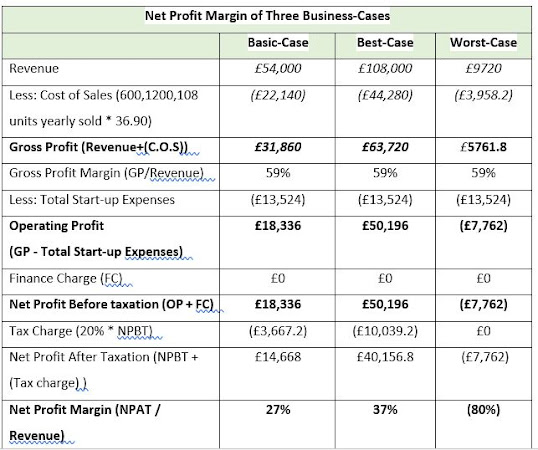KOMPOT - Business Model And Plan
Business Model
Business Plan
1. The Market
2. Customer Segment - ICP
"The study targets people in Greater London who live in high-rise flats with small kitchens and no garden space for compost bins. They need to dispose of kitchen waste and are environmentally conscious professionals who enjoy keeping plants at home."
3. Value Proposition
Unique Selling Value Proposition:
"Because our product is high-capacity, compact in design, and energy efficient, it will help year-round composting of smelly and messy kitchen food waste in urban spaces."
4) Key Resources
✅ External: Suppliers, investors, and distributors support materials, troubleshooting, and funding.
✅ Interface: Community feedback shapes design; municipal policies determine feasibility.
|
Company |
Price |
Material |
Capacity |
Weight & Portable |
Energy Consumption |
Operational Efficiency |
|
£380.96 |
Plastic |
5 Liters |
30 lbs, Indoors |
120 Volt |
Easy to use, 8-Hour Cycle to Compost. Carbon Pallets Required |
|
|
£456.43
|
Plastic |
3 Liters |
20 lbs, Indoors |
110 Volt |
Easy to use, 5 to 20 20-hour cycle to Compost.
Charcoal and Pods Required |
|
|
£332.56 |
Plastic and metal |
4 gallon weekly capacity |
5 lbs, Indoors, outdoors |
Not mentioned |
2 weeks composting cycle, Sawdust pallets
required |
|
|
£190 |
Recycled and insulated material APRO |
100 Liters |
outdoors |
Not mentioned |
30 to 90-day cycle, Woodchips required |
|
|
£419.09 |
PC, Aluminium Alloy |
3.3 Liters |
21 lbs indoors |
220 - 240V |
13-14 hours Cycle, Activated Carbon Refill
Required, The output is dry fertiliser, not compost |
5. KOMPOT - SWOT Analysis
-
Designed to monitor the competitor landscape and internal company analysis.
6. Key Activities

The products will be sourced from Togo Solutions, and then the products will be distributed to retailers such as Tesco, B&Q. where the products will be displayed and sold.
Product pitching will secure partners with full overviews, followed by price, service negotiations, and partnership agreements..
Strategies
7. Financial Planning
1. Cost Structure
| Cost Item | China-Sourced (£) | UK-Produced (£) |
|---|---|---|
| Inbound Logistics | ||
| Production Cost | 1,500 | 6,996 |
| Packaging Cost | 300 | - |
| Domestic Transport | - | 100 |
| Shipping (Ocean Freight) | 400 | - |
| Customs Duties | 75 | - |
| Warehousing | 50 | - |
| Total Inbound | 2,325 | 7,096 |
| Outbound Logistics | ||
| Packaging | - | 300 |
| Domestic Shipping | 700 | 700 |
| Storage / Agent Fee | 100 | - |
| Total Outbound | 800 | 1,000 |
| Subtotal (pre-VAT) | 3,125 | 8,096 |
| VAT (20%) | 615 | - |
| Total Cost | 3,690 | 8,096 |
c. Cost of Sales and Revenue
Cost per unit =
Below is the calculation of the sales price per unit;
“Cost = 41 % of Sales Price
Profit margin = 59% of Sales Price
Sales Price per unit = Cost per unit / (1 – (Profit margin/100))











Comments
Post a Comment